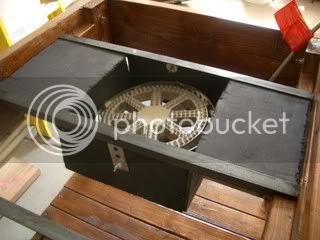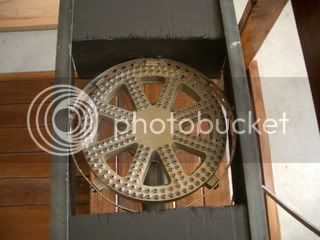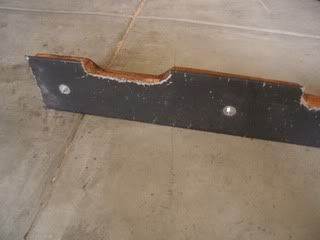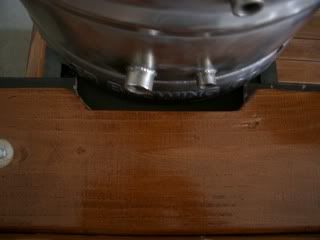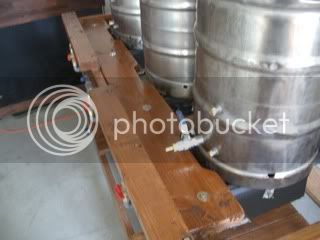ScubaSteve
Well-Known Member
- Joined
- May 21, 2007
- Messages
- 3,673
- Reaction score
- 91
Alright guys....brewing a Stone Clone on it right now....gonna follow Ed's recipe, but will also add 2 oz. whole Cascade continuously towards the last 30 mins, and also during whirlpool (first time doing this). I was setting up and my neighbor across the street had to come over and ask me the obligatory questions....he said he and his GF jokingly thought I was a terrorist:cross: I'll take that as a compliment 
BTW, Bobby you're right Not 15 minutes into heating my mash water did the thing start to smoke and bubble the polyurethane stain! I just turned it down and I was fine. I'm thinking about a couple mods already:
Not 15 minutes into heating my mash water did the thing start to smoke and bubble the polyurethane stain! I just turned it down and I was fine. I'm thinking about a couple mods already:
1) Beer holder
2) Therm holder
3) Using that fireproof concrete impregnated fiberglass board as a wind/heat shield
I'll keep y'all posted
BTW, Bobby you're right
 Not 15 minutes into heating my mash water did the thing start to smoke and bubble the polyurethane stain! I just turned it down and I was fine. I'm thinking about a couple mods already:
Not 15 minutes into heating my mash water did the thing start to smoke and bubble the polyurethane stain! I just turned it down and I was fine. I'm thinking about a couple mods already:1) Beer holder
2) Therm holder
3) Using that fireproof concrete impregnated fiberglass board as a wind/heat shield
I'll keep y'all posted














































![Craft A Brew - Safale S-04 Dry Yeast - Fermentis - English Ale Dry Yeast - For English and American Ales and Hard Apple Ciders - Ingredients for Home Brewing - Beer Making Supplies - [1 Pack]](https://m.media-amazon.com/images/I/41fVGNh6JfL._SL500_.jpg)
